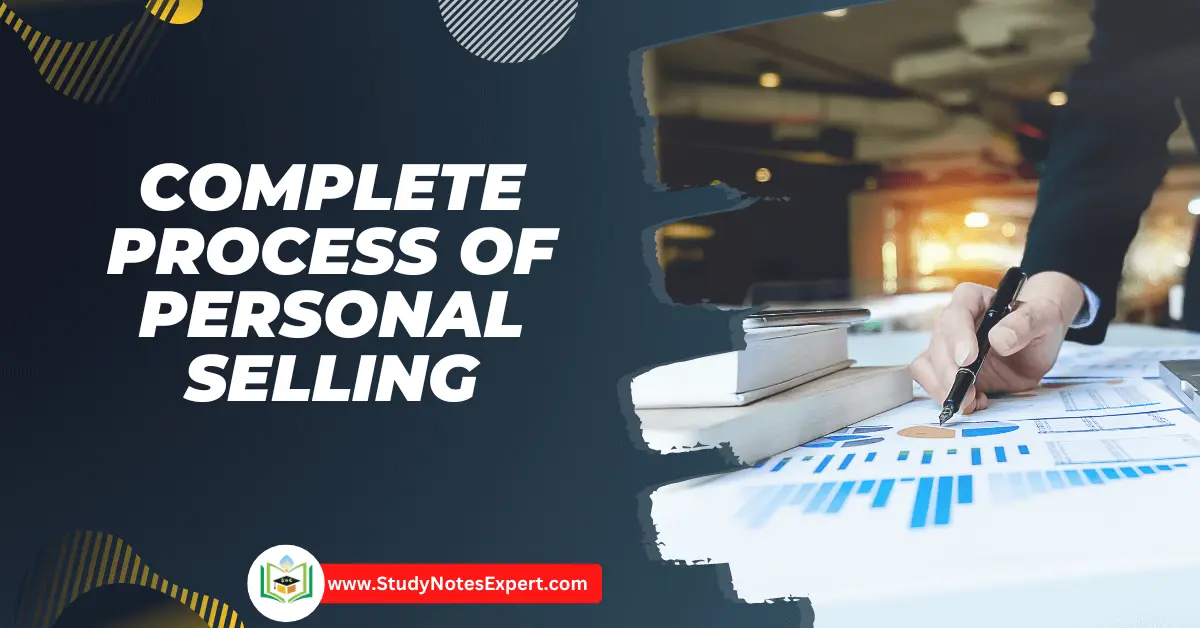Personal selling is the systematic process through which the salesperson closes a sale. It starts with identifying the prospects, approaching them, presenting the products and services, handling their objections, closing the sales and finally following up with the customers.
Process of Personal Selling
The steps in the personal selling process are as below:
1) Pre-sale Preparation
It is the first step in the process of personal selling. Here, the sales personnel try to acquire background knowledge about customers’ needs and wants. In this step, the sales personnel also try to gain knowledge about the market, product, its features, products of competitors, and methods of selling. The sales personnel should know the benefits and disadvantages of their product as well as the products of their competitors. This step ensures that sales personnel know important aspects of selling. This knowledge helps the sales personnel persuade customers by providing useful information and handling their queries.
2) Prospecting
The next step in the process of personal selling is prospecting. It is concerned with the identification of potential customers. Potential customers have a need, have the purchasing power and are willing to pay. In this step, the salesperson lists prospective customers and identifies their needs, tastes and preferences. Sales personnel use many internal and external sources to collect customer information, such as observation, analyzing the organization’s records of customers, social contacts, business associations, dealers, etc.
3) Pre-approach
The next step in the process of personal selling process is pre-approach. In this step, sales personnel collect information regarding the prospect’s likes, dislikes, economic status, etc. This information can be useful for preparing the salespersons to prepare a plan for their visits and presentations to the prospect. This stage is not only necessary for new customers but for old customers as well. To collect the information regarding prospects systematically, the factors that should be kept in mind are the applicability of information, usage and organization of information so that they can be accessed easily.
4) Approach to the Customer
When salespersons meet the prospects face-to-face, it is “approaching the customer”. Without meeting personally, it is difficult to persuade the customer to make a purchase, making it hard to convert the prospect into a customer. The sales strategy process finishes when the salesperson meets the customer personally. Here, the salesman tries to draw the attention of prospects towards the product and make a favourable impression. As soon as the customer shows interest in the product, the salesperson sells the product.
5) Sales Presentation and Demonstration
In this stage, salespersons present the product to the prospect and demonstrate its features and potential benefits. It is a business proposition that is helpful to persuade the prospect. It carries in a comfortable environment so that the prospects share their requirements. Presentation done effectively attracts the prospect towards the product. Demonstration deals with explaining the product’s features, benefits and usage. It explains the presented product’s quality, use, performance, etc., to persuade the prospects.
6) Handling Customer Objections
Objections are the queries and doubts of the customer about the product or organization. Sometimes sales personnel misinterpret the objections as the refusal of an offering, but actually, the customer asks for additional information so that they can make a buying decision. Hence, these are the expressions of interest in the product by the prospect. Initially, the objections were the obstacles in the selling process that salespeople overcome to win over the customer. But, in today’s perspective, objections work positively and considerably as an essential element. A true objection may indicate that the customer does not show interest in the product. Hence, the selling process should be stopped.
7) Closing the Sales
At this stage, the actual sale is realized. It is the outcome of all the efforts put into preparation, prospecting, approaching and presenting. It aims to help customers in making a purchase. Generally, the sales meetings or calls are pre-arranged and pre-planned. If everything goes according to planning, the sale is realizable; however, it may sometimes not even be realizable. In this step, once the prospects show interest in the products, various methods are helpful to approach them for the sales call.
8) Post Sales Follow-up
Most sales personnel believe closing a sale is the only important thing in the complete selling process, which is untrue. It is the last and final step in the process of personal selling. The job of a salesperson does not end at closing the sales. Still, he is responsible for ensuring that the products are delivered to the customers, and products are performing as per the specifications. The sales personnel should give enough training to help and support the customers using the product. Traditionally, the post-sales follow-ups were limited to the delivery of the product and the performance of the product. But, modern sales organizations focus on building and maintaining long-term relationships with existing customers.

